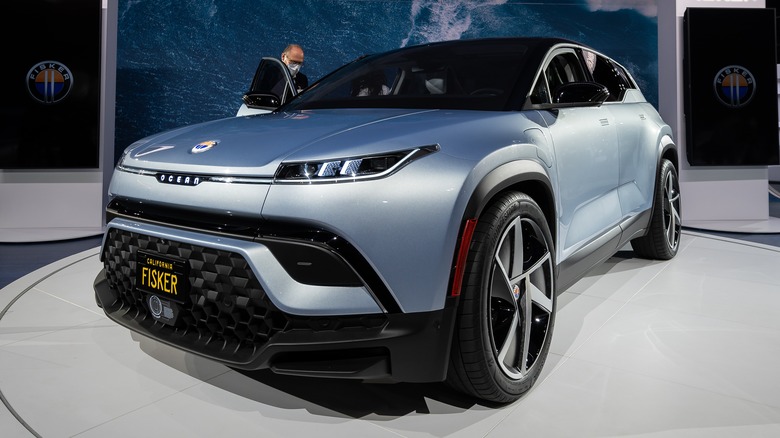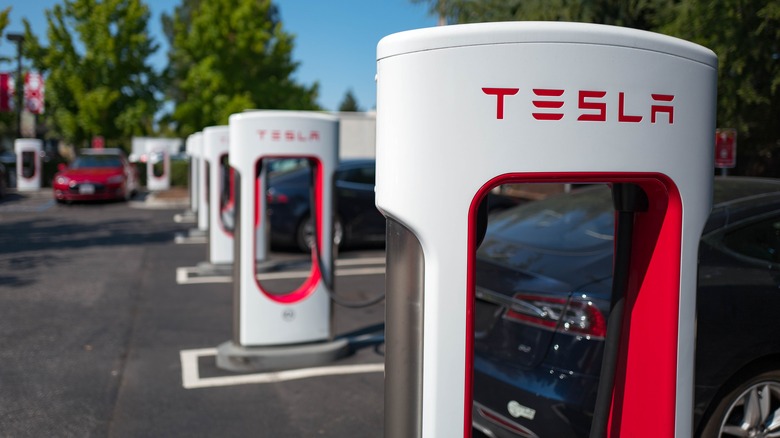Fisker Becomes The Latest EV Maker To Commit To Tesla's NACS
Back in the day, Fisker was one of Tesla's biggest opponents. Now, after losing the EV war, Fisker is adopting Tesla's chargers. The carmaker announced today that it signed an agreement with Tesla that gives Fisker customers access to Tesla's Supercharger network. Starting in 2025, Fisker owners can Supercharge their cars at Tesla charging stations via an adapter.
Additionally, Fisker noted that its new line of vehicles, which won't arrive until 2025, won't need an adapter to access the Supercharger network. The EV manufacturer explained that future vehicle models will feature a North American Charging Standard (NACS) port, rather than the previously standard Combined Charging System (CCS) port. CCS fans fret not, however, as Fisker stated that an adapter would be provided for those that want to access non-Tesla-owned charging stations.
This migration to NACS has only recently become an option for automakers, as Tesla owned the rights to the NACS connector until late last year. There's no shortage of manufacturers making the switch: Ford, GM, and Volvo are all notable companies that have embraced Tesla's Supercharger network. Many believe that this will make the lives of all EV owners easier in the U.S.
It's the obvious choice
With 12,000 Tesla Supercharger stations across the United States and Canada, it makes sense that Fisker and other EV companies want to tap into the already established network. This is because building and maintaining a charging network is no cheap task, meaning many automakers are embracing Tesla charging stations by fitting future vehicles with NACS power ports.
That being said, EVs with CCS ports can technically access Tesla Charging stations. Some Tesla Superchargers have a connector that allows CCS vehicles to charge up. However, these special stations are few and far between, and charging a non-Tesla at one is a bit of a headache, as users need to go on the Tesla app to set up the procedure.
Users need to input payment information and select what station the vehicle is parked at. This is far from the plug-and-play experience Tesla owners enjoy. Thus, an EV with a NACS port connected to the Tesla app would have an easier time charging up.
All signs point toward NACS being the standard charging port for EVs going forward in the U.S. If automakers continue to embrace the connector, all charging stations built in the U.S. will have to offer NACS charging, giving drivers more places to charge up.

